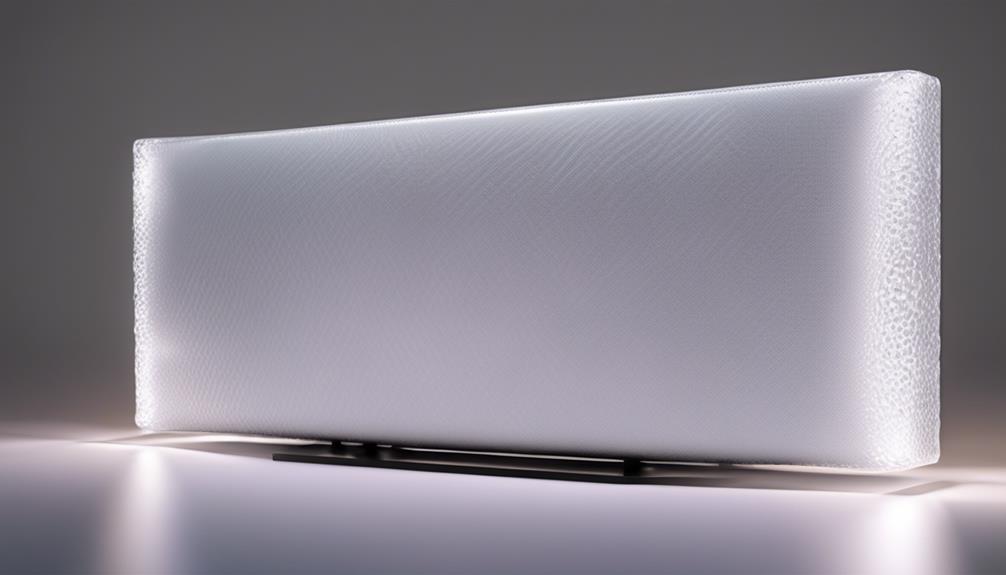You shouldn't lay a TV face down, as it can cause serious damage. The screen can get scratched or even cracked from contact with hard surfaces. Pressure on internal components may lead to misalignments or failures, impacting performance. Different types of TVs have varying levels of resilience, but it's generally risky for all. Always handle your TV upright and use soft padding during transport for protection. Following best practices prevents mishaps and extends the lifespan of your device. If you want to guarantee your TV stays safe, you might want to discover more tips about proper handling techniques.
Risks of Laying a TV Face Down
Laying a TV face down can pose several risks that might damage the screen or internal components. First off, the delicate screen could get scratched or cracked if it comes into contact with hard surfaces. Even if you think the surface is clean, any tiny debris can create noticeable marks. Additionally, when you place a TV face down, it puts pressure on the internal components, which can lead to misalignments or failures. You might not notice immediate damage, but over time, this can affect the performance and lifespan of your TV. It's also important to remember that the weight distribution can cause strain on the frame, potentially warping it. So, while you might feel free to do as you please, think twice before laying it down.
Recommended Handling Techniques
When moving a TV, it's best to keep it upright and supported by at least two people to prevent any accidental damage. Make sure you grip the TV firmly but gently, avoiding any pressure on the screen. If you can, use a moving blanket or soft padding to shield it from bumps. When maneuvering tight spaces, communicate with your partner to guarantee smooth movement, avoiding abrupt turns that could stress the TV. If you're using a dolly, secure the TV with straps, and keep it stable. Remember, freedom in handling means being careful; you can protect your equipment by being mindful. Always prioritize safety over speed to keep your TV in perfect condition for your viewing pleasure.
Transporting Your TV Safely
Transporting your TV safely requires careful planning and the right equipment to avoid damage during the journey. First, gather sturdy packing materials like bubble wrap and blankets to cushion your TV. If you still have the original box, that's even better! When loading your TV, keep it upright; laying it flat can strain the screen and components. Use straps or bungee cords to secure the TV in your vehicle, ensuring it doesn't shift during transit. If you're moving it yourself, enlist a friend to help—you want to avoid awkward lifting and potential drops. Finally, drive carefully and avoid sudden stops. With these precautions, you'll protect your investment and enjoy the freedom of moving without worry!
Effects on Different TV Types
Different types of TVs can react uniquely to being laid face down, so it's important to understand how your specific model might be affected. For instance, LCD and LED TVs are generally more resilient, but placing them face down can still put pressure on the screen and risk damage. On the other hand, OLED TVs are more delicate; the organic materials used can be more prone to damage if laid flat. Plasma TVs, while heavier, can also suffer from screen pressure and internal damage. If you want to make sure your TV stays in great shape, it's vital to check the manufacturer's guidelines. You've invested in your TV, so treating it with care will help maintain your viewing freedom for years to come.
Best Practices for Setup
To guarantee your TV is set up safely and effectively, always follow the manufacturer's recommendations for positioning and support. Choose a flat, stable surface that can handle your TV's weight, and keep it away from direct sunlight to prevent overheating. If you're mounting it on a wall, make certain the brackets are securely fastened to the studs. Don't forget to check the cable management; a clean setup not only looks good but also minimizes potential hazards. If you're using a stand, make sure it's sturdy and compatible with your TV size. Finally, take your time during the setup process; rushing can lead to mistakes that might compromise your TV's safety and performance. Enjoy your viewing experience!
What to Avoid During Installation
Avoid placing your TV on an unstable surface, as this can lead to accidents and damage. Make certain the area is clean and free of clutter to prevent any unwanted mishaps. Don't forget to steer clear of heat sources like radiators or direct sunlight, which can cause overheating and affect performance. Also, avoid using cheap mounts or brackets; invest in quality equipment to guarantee your TV's safety. Be cautious about running cables where they could become tripping hazards, and avoid overloading power outlets to prevent electrical issues. Finally, don't rush the installation process; take your time to guarantee everything's secure and set up properly. Your TV deserves a solid foundation to thrive.

